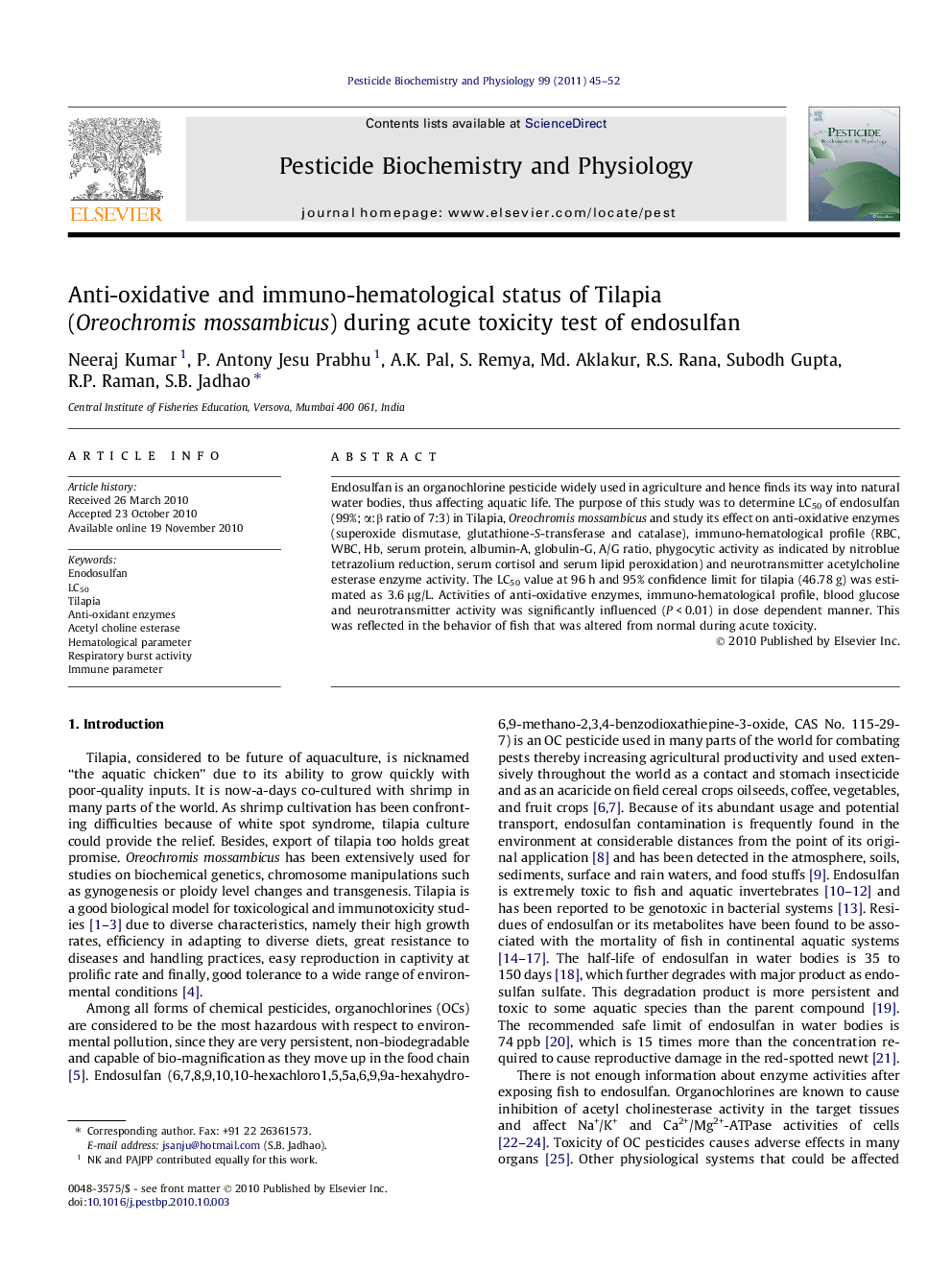| Article ID | Journal | Published Year | Pages | File Type |
|---|---|---|---|---|
| 2009954 | Pesticide Biochemistry and Physiology | 2011 | 8 Pages |
Endosulfan is an organochlorine pesticide widely used in agriculture and hence finds its way into natural water bodies, thus affecting aquatic life. The purpose of this study was to determine LC50 of endosulfan (99%; α:β ratio of 7:3) in Tilapia, Oreochromis mossambicus and study its effect on anti-oxidative enzymes (superoxide dismutase, glutathione-S-transferase and catalase), immuno-hematological profile (RBC, WBC, Hb, serum protein, albumin-A, globulin-G, A/G ratio, phygocytic activity as indicated by nitroblue tetrazolium reduction, serum cortisol and serum lipid peroxidation) and neurotransmitter acetylcholine esterase enzyme activity. The LC50 value at 96 h and 95% confidence limit for tilapia (46.78 g) was estimated as 3.6 μg/L. Activities of anti-oxidative enzymes, immuno-hematological profile, blood glucose and neurotransmitter activity was significantly influenced (P < 0.01) in dose dependent manner. This was reflected in the behavior of fish that was altered from normal during acute toxicity.
Graphical abstractFigure optionsDownload full-size imageDownload as PowerPoint slideResearch highlights► The LC 50 value of Tilapia was found to be 3.609 ppb. ► Acute exposure to endosulfan negatively influenced activity of antioxidant enzymes. ► Acute exposure also negatively influenced immunohematological profile and neurotransmitter, acetyl choline esterase, activity.
